Continuous Innovation: Road Safety
Bosch can provide customized braking systems for various vehicles and customer needs, including vehicle size, power type, degree of electrification, and the number of auxiliary functions. ESP hev can provide regenerative braking solutions for hybrid and electric vehicles, while traditional ESP is suitable for conventional vehicles. Bosch provides vehicle manufacturers with unparalleled modular and scalable solutions, especially for vehicles with different power types.
ESP hev, a regenerative braking system developed for hybrid and electric vehicles: Bosch has the world's first mass-produced regenerative braking system ESP hev that coordinates wheel and electric motor braking without additional components and can recover a large portion of the braking energy. Bosch ESP hev was first used in the Mercedes-Benz hybrid S400 in mid-2013. In this model, Bosch ESP hev coordinates the hydraulic and electric motor braking torques and controls the electric vacuum pump of the vacuum brake booster. The driver decouples the brake circuit of the rear axle by pressing the brake pedal. By deliberately increasing the travel of the brake pedal, the vehicle is initially braked only by the electric motor connected to the rear axle and generates electricity. The system can determine how much generator torque is required based on the position of the pedal. If the driver presses the pedal harder, additional hydraulic braking torque is applied to the front axle of the vehicle in the normal way, so that both the front and rear axles of the vehicle are braked. If the generator cannot generate enough braking torque on the rear axle, the system uses the hydraulic regulator to generate additional brake pressure. The transition between hydraulic and electric motor is so smooth that the driver does not even notice it, and the vehicle's performance and pedal feel are no different from those of a normal vehicle. In addition to the above-mentioned ESP hev for parallel brake line layout of the front/rear axle, Bosch also launched a version for diagonal brake line layout. ESP hev is also applicable to front-wheel drive or four-wheel drive models. The regenerative braking system ESP hev is based on the Supreme Edition, the highest performance version of the ninth generation ESP.
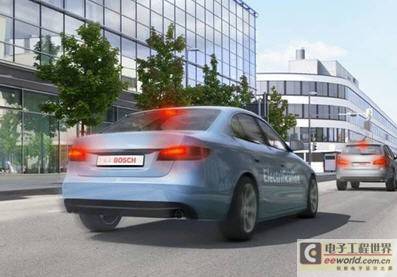
Figure: ESP hev, a regenerative braking system developed specifically for hybrid and electric vehicles
In addition to providing and innovating safety technologies for passenger cars, Bosch is also further enhancing the safety and comfort of two-wheeled vehicles. When braking hard or riding on slippery roads, motorcycles may experience wheel lock. Survey analysis shows that by 2020, mandatory installation of ABS for motorcycles will save more than 5,000 lives.
Anti-lock Braking System (ABS) for Motorcycles: Anti-lock Braking System (ABS) prevents wheels from locking when braking, even on variable road surfaces. Bosch's ninth-generation motorcycle ABS is the first anti-lock braking system developed specifically for motorcycles, with a smaller and lighter size and weight. With a modular design, it can be applied to motorcycles of all performance levels. Bosch's Motorcycle Stability System (MSC) was also launched in 2013. This system is the world's first system that can provide support in all riding conditions, whether braking, accelerating, driving straight or turning; and it will not affect the control experience, the essence of motorcycle driving pleasure.
At the same time, motorcycle assistance systems are becoming increasingly popular - for example, traction control systems can improve safety and hill-hold control systems can improve driving comfort. The implementation of these functions requires a variety of sensors to provide essential vehicle dynamic data: wheel sensors can be used to measure the rotation speed of the front and rear wheels; tilt angle sensors can measure the longitudinal, lateral and vertical acceleration of the motorcycle while driving, and use this information to calculate the angular velocity and rolling speed of the motorcycle. This data can provide safety and comfort functions such as traction control, turn signals, launch control and head-up suppression. In addition, sensor data will also be used to realize other new features that are about to be launched or are under development, such as cornering ABS, fall detection, semi-active suspension, etc., laying the foundation for a safer, more comfortable and dynamic motorcycle driving experience.
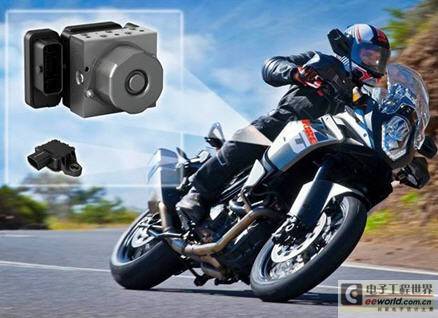
Figure: Motorcycle Anti-lock Braking System ABS
iBooster, an electromechanical servo booster that does not rely on a vacuum source: This product enables hybrid and pure electric vehicles to achieve higher energy efficiency, shorten braking distances, and improve safety. Like the working principle of a traditional vacuum booster, when the driver steps on the brake pedal, the input rod moves accordingly in the direction of the booster valve body. After the pedal travel sensor measures the displacement of the booster input rod, it sends the displacement signal to the iBooster control unit. The control unit calculates the torque requirement that the motor should generate. The secondary gear device then converts the torque into a servo braking force for the booster valve body.
In addition, if applied to vehicles equipped with energy recovery systems, iBooster and ESP hev will achieve energy recovery of up to 0.3g deceleration, which is enough to cover most braking situations in road traffic.
Driver assistance systems also benefit from the innovative iBooster technology. Even without the driver pressing the brake pedal, iBooster quickly builds up the required brake pressure and regulates it precisely – a huge advantage for automatic emergency braking systems. In critical situations, iBooster not only shortens the braking distance, but also helps reduce the impact speed when a collision is unavoidable, thereby reducing the damage to the person involved.
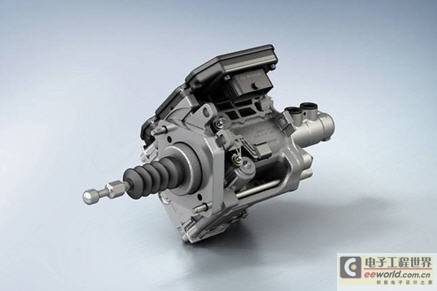
Figure: iBooster, an electromechanical servo booster that does not rely on a vacuum source
Driver assistance systems: laying an important foundation for autonomous driving technology
According to data research, more than 90% of traffic accidents are caused by human factors. Globally, road traffic accidents cause nearly 1.3 million deaths and 50 million injuries each year. In order to minimize road traffic accidents and achieve the "zero accident" vision, Bosch continues to innovate driver assistance system functions to lay the foundation for building autonomous driving.
Driver assistance systems: The system monitors the vehicle's surroundings through sensors such as radar, video and ultrasound, and provides the driver with processed information to achieve a safer and more comfortable driving process. Radar sensors can accurately measure the distance and speed of other vehicles within a range of 200 meters, laying an ideal foundation for adaptive cruise control and predictive emergency braking systems. Bosch specifically uses the high-capacity 77Ghz frequency band that is permanently allocated to automobiles worldwide. Bosch's mid-range radar sensor (MRR) has been put into mass production in 2013. Video sensors can identify everything from road signs and markings to pedestrians and bicycles. The new Bosch stereo camera, which went into mass production in 2014, has a binocular camera. This single sensor solution meets all the latest requirements of the European New Car Assessment Program (Euro NCAP). Wide-angle video sensors have a 360° field of view (bird's eye view) and can cover the entire close-range area around the vehicle, so they are increasingly used in parking and maneuvering assistance functions. Ultrasonic sensors are a cost-optimized solution that draws on the principle of bats finding their way in the dark and have been successfully used in the distance measurement function of parking assistance systems for the past two decades. Bosch's driver assistance system will be mass-produced on Chinese independent brand models this year.

Figure: Bosch driver assistance system function combination
Autonomous driving: In May 2013, Bosch's autonomous driving technology was tested on the road in Germany, aiming to test the automatic steering and autonomous driving functions in daily driving environments, so as to further optimize its performance. The first stage of the technology development test was autonomous driving on the highway. As there are no pedestrians, cross traffic and oncoming vehicles, the highway is the road section with the lowest coefficient of autonomous driving technology. The test vehicle equipped with Bosch's autonomous driving technology has coordinated control of road keeping support, adaptive cruise control system and lane change assistance, and collects necessary information about the vehicle's surrounding environment with the help of Bosch radar and video sensors. Real vehicle road tests will help develop more automated driving functions, such as traffic congestion assistance functions that can achieve fully autonomous driving at low speeds. At present, these tests have provided many valuable experiences for improving the performance of emergency braking or avoidance systems.
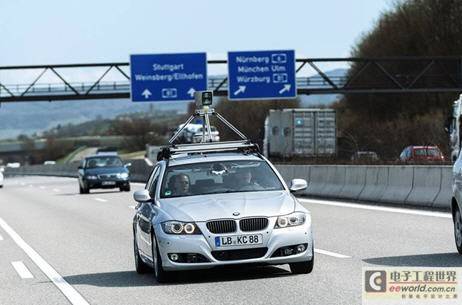

Figure: Bosch autonomous driving technology is tested on German highways
Rooted in the local area, improving China's road safety
As the world's largest automobile market, China's demand for automobile safety technology is also increasing as the public's awareness of road safety increases. In line with the development strategy of "rooted in the local area, serving the local area", Bosch Chassis Control Systems has continuously strengthened its local production and R&D capabilities, worked closely with local customers, and provided safe and comfortable automobile technology solutions to better serve the Chinese automobile market.
Bosch driver assistance system team localization process: Bosch builds engineering capabilities for driver assistance systems in China to support the local market. In 2011, the driver assistance engineering department was established and the radar maiden flight project was launched. In 2012, the video product maiden flight project was launched. In 2013, the driver assistance system laboratory was established. Bosch's local driver assistance system team has developed rapidly and can support the entire process of local project matching and start the development of new product platforms based on local needs. In 2015, it will have the ability to develop local comprehensive systems and local comprehensive lean matching.
In recent years, the market prospects for driver assistance systems are broad, and driving safety has become an important factor for Chinese consumers when choosing a car. In order to meet the needs of the local Chinese market, Bosch Chassis Control Systems Division has further deepened its layout in the Chinese market and strengthened its local engineering and technical capabilities in China.
Bosch (Donghai) Automotive Testing Technology Center: In June 2013, the Bosch (Donghai) Automotive Testing Technology Center in Donghai, Lianyungang was officially opened. The test center invested 591 million yuan, covers an area of about 1,396,000 square meters, and has high-tech professional automobile test roads and supporting facilities. It provides professional road tests for Bosch active safety technologies and driver assistance systems including anti-lock braking system ABS, electronic stability program ESP, etc. At present, the 300-meter diameter dynamic test area (VDA) has been completed in the first phase. The VDA test area is made of seamless asphalt paving, can bear 45 tons, and can perform matching tests including electronic stability program ESP for a variety of models including passenger cars, motorcycles and heavy commercial vehicles.
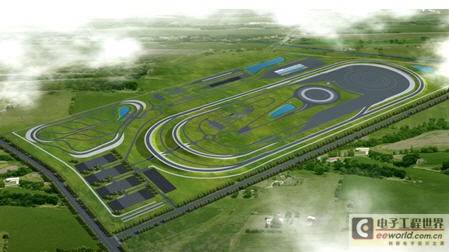
Figure: Bosch (Donghai) Automotive Testing Technology Center
Bosch Automotive Components (Chengdu) Co., Ltd.: The Chengdu plant is the second production base invested and built by Bosch Chassis Control Systems Division in China after the Suzhou plant. The plant is located in Chengdu Economic and Technological Development Zone, covers an area of about 127,000 square meters, and the total investment will reach RMB 880 million. The first phase of the project has been completed, with an investment of RMB 287 million. Wheel speed sensors were put into production in the new plant in 2013, and anti-lock braking system ABS and electronic stability program ESP® were also put into production in 2014. Based on the Suzhou plant, Bosch Chassis Control Systems Division has further expanded its business layout in China, especially being able to respond more quickly to the needs of the western Chinese market and provide better services to local customers.
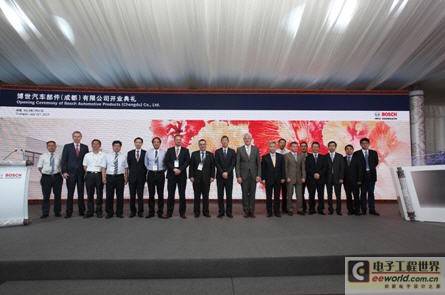
Figure: Bosch Automotive Components (Chengdu) Co., Ltd. officially opened
Previous article:Wet clutch is the target? See the dry and wet dual clutch competition
Next article:The direction is in your hands? Q50 steer-by-wire technology
- Popular Resources
- Popular amplifiers
- Car key in the left hand, liveness detection radar in the right hand, UWB is imperative for cars!
- After a decade of rapid development, domestic CIS has entered the market
- Aegis Dagger Battery + Thor EM-i Super Hybrid, Geely New Energy has thrown out two "king bombs"
- A brief discussion on functional safety - fault, error, and failure
- In the smart car 2.0 cycle, these core industry chains are facing major opportunities!
- The United States and Japan are developing new batteries. CATL faces challenges? How should China's new energy battery industry respond?
- Murata launches high-precision 6-axis inertial sensor for automobiles
- Ford patents pre-charge alarm to help save costs and respond to emergencies
- New real-time microcontroller system from Texas Instruments enables smarter processing in automotive and industrial applications
- Innolux's intelligent steer-by-wire solution makes cars smarter and safer
- 8051 MCU - Parity Check
- How to efficiently balance the sensitivity of tactile sensing interfaces
- What should I do if the servo motor shakes? What causes the servo motor to shake quickly?
- 【Brushless Motor】Analysis of three-phase BLDC motor and sharing of two popular development boards
- Midea Industrial Technology's subsidiaries Clou Electronics and Hekang New Energy jointly appeared at the Munich Battery Energy Storage Exhibition and Solar Energy Exhibition
- Guoxin Sichen | Application of ferroelectric memory PB85RS2MC in power battery management, with a capacity of 2M
- Analysis of common faults of frequency converter
- In a head-on competition with Qualcomm, what kind of cockpit products has Intel come up with?
- Dalian Rongke's all-vanadium liquid flow battery energy storage equipment industrialization project has entered the sprint stage before production
- Allegro MicroSystems Introduces Advanced Magnetic and Inductive Position Sensing Solutions at Electronica 2024
- Car key in the left hand, liveness detection radar in the right hand, UWB is imperative for cars!
- After a decade of rapid development, domestic CIS has entered the market
- Aegis Dagger Battery + Thor EM-i Super Hybrid, Geely New Energy has thrown out two "king bombs"
- A brief discussion on functional safety - fault, error, and failure
- In the smart car 2.0 cycle, these core industry chains are facing major opportunities!
- The United States and Japan are developing new batteries. CATL faces challenges? How should China's new energy battery industry respond?
- Murata launches high-precision 6-axis inertial sensor for automobiles
- Ford patents pre-charge alarm to help save costs and respond to emergencies
- New real-time microcontroller system from Texas Instruments enables smarter processing in automotive and industrial applications
- Analog Electronics Tong Shibai 223 pages Frequency Response
- EEWORLD University Hall----Live Replay: Infineon BMS solutions protect electric vehicles and energy storage systems!
- Explore TE's PCB Subsystem Solutions
- Things to note when selecting Keithley desktop power supply
- Application of operational amplifier in active filtering
- Solution to EK200-6Q7C stuck during operation
- Goodbye February, hello March
- Embedded protocol selection issues
- [ST NUCLEO-H743ZI Review] (5) ADC conversion speed and accuracy test
- uPySteppers, a wirelessly controlled rotating platform using the ESP32

 LM258S
LM258S











 京公网安备 11010802033920号
京公网安备 11010802033920号